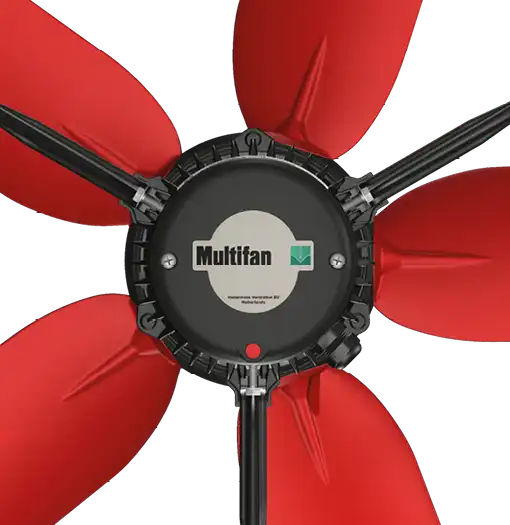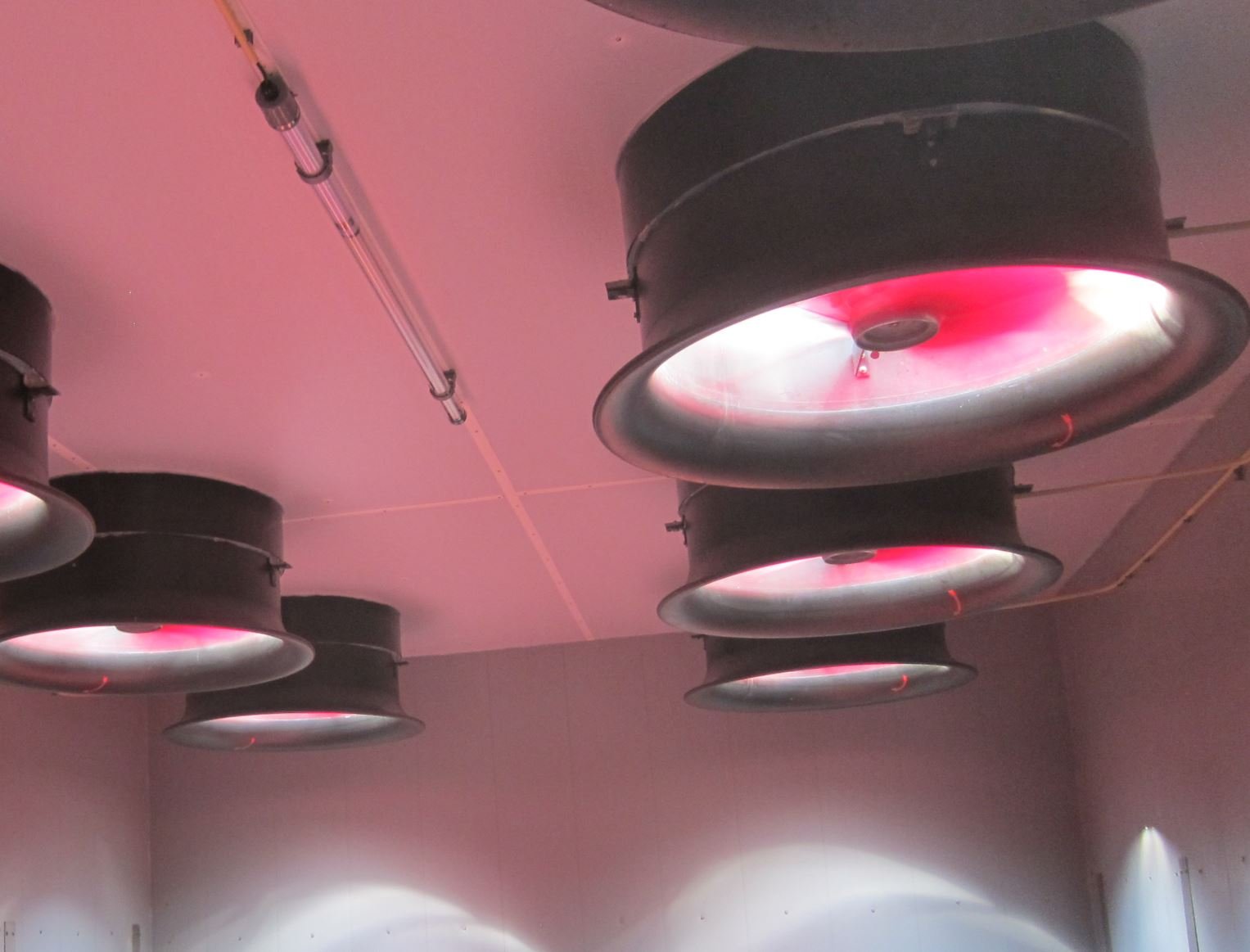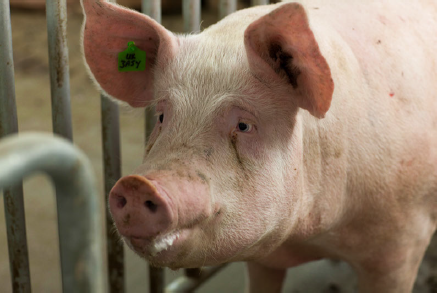Central exhaust systems are a commonly used ventilation method in pig barns. But how do they work, and what are the advantages and disadvantages of these systems? We will elaborate on this in this article.
What is a central exhaust system?
In a central exhaust or central extraction system, the air from the different sections in the pig barn is brought together in a central air duct to leave the barn at a single point of emission.
How does a central exhaust system work?
The process is split into two steps. In the central duct, a stable negative pressure (for example 20 Pa) is maintained. This negative pressure remains the same regardless of the delivered air flow. The different sections in the barn are separately linked to this duct. Each section on the ground floor has a temperature-controlled air inlet and a measuring unit. When there is a need for ventilation in a section, the inlet in the section ceiling is opened to extract air through the central duct. As soon as this happens, the negative pressure in the duct drops, after which it is returned to the required level using High Pressure Fans. These fans are controlled by adjusting the fan speed or switching on additional fans. It is important that the negative pressure in the central duct never changes. Using this cycle, the individual areas are independently supplied with fresh air.
The advantages of a central exhaust system
1. One central point of emission for air washers
In several countries, pig farmers are obliged to treat barn air with an air washer before the air is expelled. In this case, an air washer is often used in combination with a central exhaust system in pig barns. The advantage of the central exhaust system is that points of emission are combined and that the air can be treated at a central point before it is released into the environment.
2. Energy-efficient
Central Exhaust systems often make use of High Pressure Fans. This is because one of their characteristics is that they also provide sufficient pressure range at a low speed. You can read more about this in our blog about the role of High Pressure Fans in pig barns. Only when an air inlet is opened, and the negative pressure in the central duct drops, the High Pressure Fans in the central duct will run faster to restore the negative pressure. This control ensures that the fans can be used very efficiently in a central exhaust system.
3. Less fans required
When using a central exhaust duct in the average barn, a small number of High Pressure Fans can provide a multitude of areas with ventilation, depending on the situation. This saves the owner the cost of purchasing and installing individual fans per section.
The disadvantages of a central exhaust system
1. Greater initial investment
Although the system reduces long-term expenses, the initial investment can be greater. The duct system, for example, can be more expensive when compared to individual ducts.
2. Construction is not always easy
The construction of a central exhaust duct in an existing barn is very complex and involves high costs. Partly because of this, the systems are mainly installed in newly built barns.
With 65 years of experience in the development of fans for the pig sector, our products are specifically tailored to the situation in the market. Because of this, you will always have the best fan for your application. Have a look at the Pigs segment page for our relevant products.
Would you like to stay informed about the latest developments and news? You can sign up for our newsletter below.




